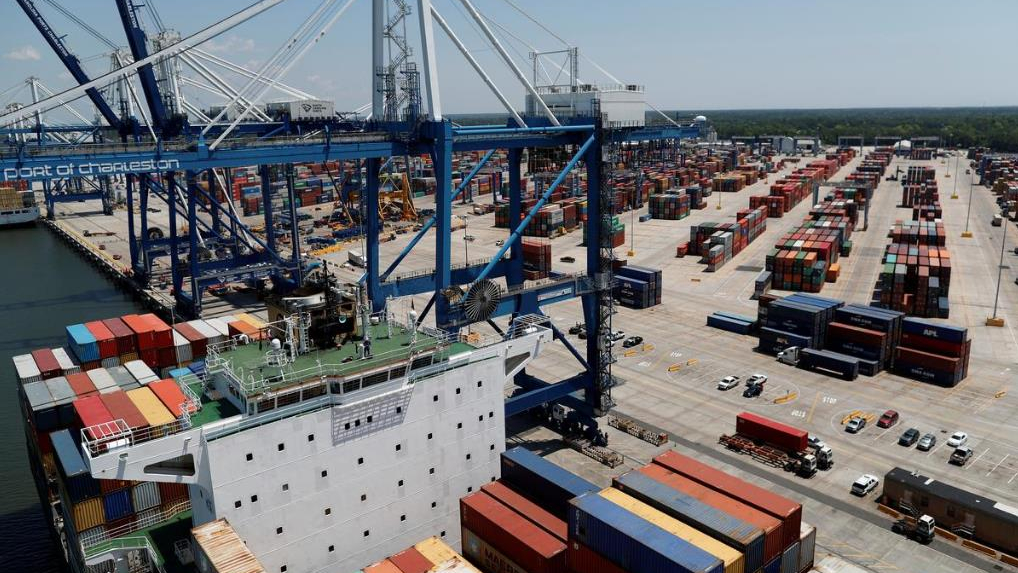The overall U.S. trade deficit fell sharply in November to the lowest level in three years as imports declined further, the U.S. Department of Commerce reported on Tuesday.
The Commerce Department said the trade deficit decreased 8.2 percent to 43.1 billion U.S. dollars in November, the smallest since October 2016. The trade gap narrowed 0.7 percent through November and is on track to record its first annual decline since 2013. Though the shrinking trade bill should boost gross domestic product in the fourth quarter, falling consumer and capital goods imports also suggest a cooling in domestic demand.
Exports for November were 208.6 billion dollars, up 1.4 billion dollars from October, while imports fell to 251.7 billion dollars, 2.5 billion dollars less than the prior month.
The decline in overall imports was driven by fewer imports of capital goods and consumer products, including computers, cell phones, and other household goods, according to the department.

The view from one of the ship-to-shore cranes at Wando Welch Terminal operated by the South Carolina Ports Authority in Mount Pleasant, South Carolina, U.S., May 10, 2018. /Reuters Photo
The view from one of the ship-to-shore cranes at Wando Welch Terminal operated by the South Carolina Ports Authority in Mount Pleasant, South Carolina, U.S., May 10, 2018. /Reuters Photo
While the shrinking trade gap would boost U.S. gross domestic product in the fourth quarter, declining imports of consumer goods also signal a weakening consumer demand in the months ahead as U.S. trade tensions with major trading partners drag on.
The U.S. economy is expected to expand at an annual rate of 2.3 percent in the fourth quarter, higher than the 2.1-percent growth rate in the third quarter, according to the latest forecast released by the Federal Reserve Bank of Atlanta on Tuesday.
But a panel of 53 professional forecasters anticipated that U.S. economic growth will slow further to 1.8 percent in 2020 from 2.3 percent in 2019, according to a survey from the National Association for Business Economics (NABE) released last month.
Trade policy continues to be the "most widely cited" dominant downside risk to the U.S. economy through 2020, with half of the respondents citing it as the "greatest" downside risk, the survey showed.
(With inputs from Xinhua and Reuters.)